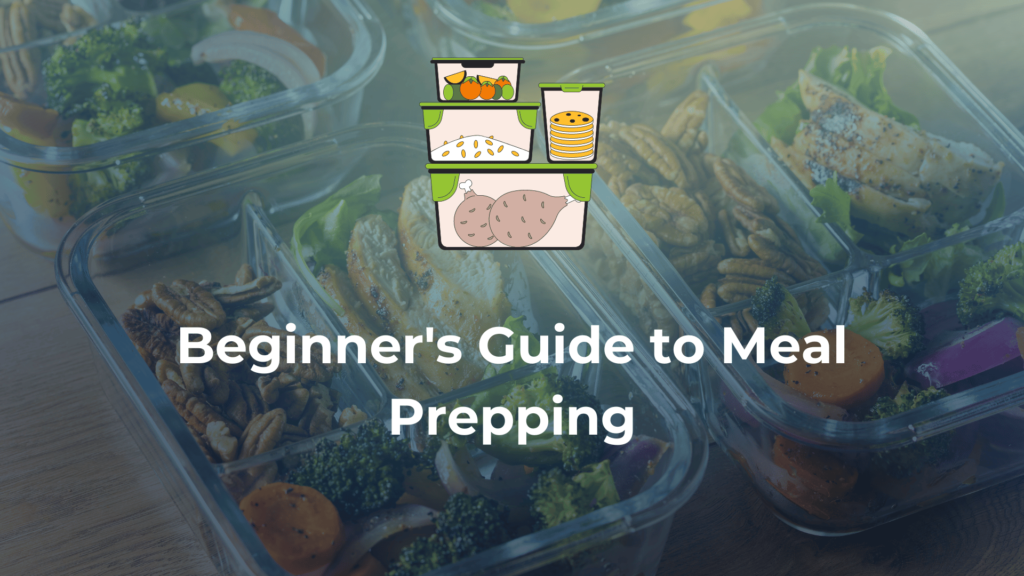Beginner’s Guide to Meal Prepping

Introduction
Meal prepping has gained popularity in recent years as a practical and efficient way to stay on track with healthy eating goals. By preparing meals in advance, you can save time, reduce stress, and make healthier choices throughout the week. If you’re new to meal prepping and unsure where to start, this beginner’s guide will provide you with a step-by-step approach to get you on your way. From time-saving tips to storage techniques and easy meal ideas, you’ll have all the tools you need to embark on your meal prepping journey.
Step 1: Plan Your Meals
The first step in meal prepping is to plan your meals for the week ahead. Take some time to brainstorm meal ideas and create a menu. Consider your dietary preferences, nutritional needs, and any specific goals you have in mind. Aim for a balance of protein, carbohydrates, and healthy fats in each meal. Variety is key to keep things interesting, so try to incorporate different flavors, textures, and ingredients.
Step 2: Make a Grocery List
Once you have your meal plan, it’s time to make a grocery list. Take inventory of your pantry and fridge to see what ingredients you already have on hand. Then, make a list of the items you need to buy. Organize your list by sections, such as produce, proteins, grains, and pantry staples, to make your shopping trip more efficient. Stick to your list to avoid impulse purchases and save money.
Step 3: Set Aside Time for Prepping
Choose a day and time that works best for you to dedicate to meal prepping. This could be a weekend day or a weekday evening when you have some free time. Block off a few hours in your schedule to focus solely on meal prepping. Having a designated time for this task will help you stay consistent and make it a regular part of your routine.
Step 4: Cook in Batches
To save time and streamline the meal prepping process, cook your ingredients in batches. For example, you can roast a large tray of vegetables, grill several chicken breasts, or cook a big pot of grains. This way, you’ll have a variety of cooked ingredients that can be mixed and matched to create different meals throughout the week. Use different cooking methods, such as baking, grilling, or sautéing, to add variety to your meals.
Step 5: Portion and Store
After cooking your ingredients, it’s time to portion them out and store them properly. Invest in a set of reusable meal prep containers that are divided into compartments. This will help you portion out your meals and keep different components separate. Label your containers with the name of the dish and the date it was prepared to keep track of freshness. Store them in the refrigerator or freezer, depending on how soon you plan to consume them.
Step 6: Time-Saving Tips
To make meal prepping even more efficient, here are some time-saving tips:
- Use pre-cut or frozen vegetables to save time on chopping and cleaning.
- Cook grains and legumes in a rice cooker or Instant Pot for hands-off cooking.
- Utilize kitchen gadgets like a food processor or blender for quick meal prep tasks.
- Prepare marinades or dressings in advance and store them in small containers for easy flavoring.
- Consider pre-washing and pre-cutting fruits and vegetables for convenient snacking options.
Step 7: Easy Meal Ideas
Here are some easy meal ideas to get you started with meal prepping:
- Grilled chicken with roasted sweet potatoes and steamed broccoli.
- Quinoa salad with mixed vegetables, chickpeas, and a lemon vinaigrette.
- Stir-fried tofu with brown rice and a colorful medley of stir-fried vegetables.
- Mason jar salads with layers of greens, protein, and toppings for a grab-and-go option.
- Overnight oats with chia seeds, almond milk, and your choice of toppings for a quick breakfast.
FAQs
1. How long can I store prepped meals in the refrigerator?
Prepped meals can typically be stored in the refrigerator for 3-5 days. It’s important to check for any signs of spoilage before consuming.
2. Can I freeze prepped meals?
Yes, many prepped meals can be frozen for longer storage. However, some ingredients may not freeze well, such as lettuce or cucumbers. It’s best to freeze meals in portioned containers and thaw them in the refrigerator overnight before reheating.
3. How do I prevent my meals from getting soggy?
To prevent meals from getting soggy, keep wet and dry ingredients separate until you’re ready to eat. For example, pack dressings or sauces in separate containers and add them just before consuming.
4. Can I meal prep if I havedietary restrictions or allergies?
Absolutely! Meal prepping can be tailored to accommodate dietary restrictions or allergies. Simply choose recipes and ingredients that align with your specific needs. There are plenty of resources available online for meal prepping ideas that cater to various dietary preferences, such as vegetarian, vegan, gluten-free, or dairy-free.
5. How do I reheat prepped meals?
To reheat prepped meals, remove them from the refrigerator or freezer and transfer them to a microwave-safe container. Heat them in the microwave on medium power, stirring occasionally, until they are heated through. Alternatively, you can reheat meals in the oven or on the stovetop using low heat. Make sure to follow proper food safety guidelines and heat the meals to a safe internal temperature.
Conclusion
Meal prepping is a valuable skill that can help you save time, reduce stress, and make healthier choices. By following this beginner’s guide, you now have the knowledge and tools to start your meal prepping journey. Remember to plan your meals, make a grocery list, set aside dedicated time, cook in batches, portion and store your meals properly, and utilize time-saving tips. With easy meal ideas and answers to common questions, you’re well-equipped to embark on your meal prepping adventure. Happy prepping!